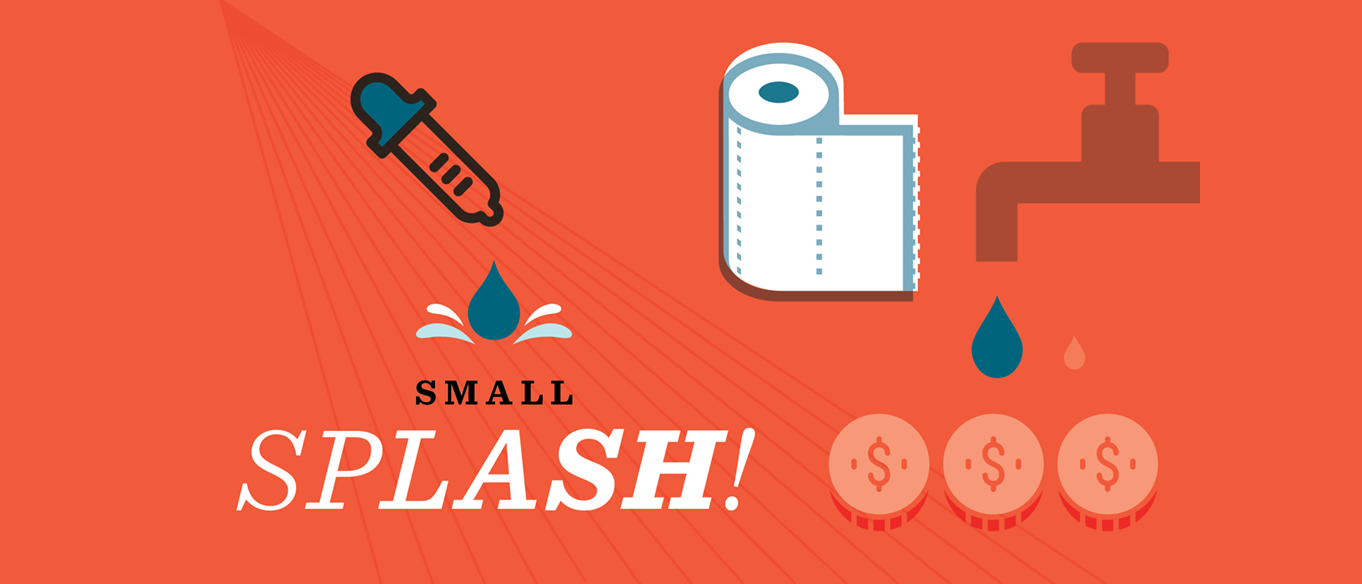
How do things stick together? When you think about everyday objects, maybe you use glue, tape, or magnets to make things stick. But when things get super small, different forces come into play. In this activity, you’ll experiment with different liquids to test the strength of these forces.
Age: 6+
Time: 20-30 minutes
Topics: liquid, penny, droplets, surface, nanoscience
What you need:
- A medicine dropper
- At least 3 pennies
- A small cup of water
- A small cup of rubbing alcohol
- A small cup of vegetable oil
- Dish soap
- Sink
- Paper towels
- Pencil and paper for a data table
What to do:
1. All around us, there are forces acting on the objects we see—including ourselves! Think about a few examples where you can see some of these forces at work:
- Why does a ball come back down after you throw it into the air?
Force = gravity: Earth pulls objects towards its center - Why does a magnet stick to a refrigerator?
Force = magnetic force: opposite magnetic fields attract - When you slide a book across the floor, why does it stop?
Force = friction: the contact between two surfaces slows an object’s motion
2. When things get super small, they behave differently, because different forces come into play. To help you investigate these forces, you’ll first need to make a data table. Scientists record their observations in data tables to organize information and look for patterns.
| Prediction | Trial 1 | Trial 2 | Trial 3 | |
| Water | ||||
| Rubbing alcohol | ||||
| Vegetable oil |
3. Start by experimenting with water first. Practice using the medicine dropper: draw some water from the cup into the dropper, then squeeze little drops—one at a time—back into the cup.
4. Now place a clean, dry penny on a paper towel. How many drops of water do you think will fit on a penny? Why? Write down the number in your data table under Prediction for water.
5. Draw some water from the cup into your medicine dropper. Then start squeezing drops onto the penny.
- Notice the growing shape of the water on top of the penny as you add more drops.
- Count the number of drops you add before the water spills over the side. Write down the number as Trial 1 for water.
- Take a second penny, and again add drops of water to it as you count. Write down the number under Trial 2.
- Repeat one more time with a third penny, and write down the number under Trial 3.
- Wash the pennies and the dropper with soap and water and dry thoroughly.
6. Repeat steps 4 and 5 with the rubbing alcohol and the vegetable oil. For each liquid, make a prediction and record it in your data table. Add each liquid to the penny drop by drop, and record your counts for each trial.
- Which liquid did you predict to hold the most drops on the penny? Did your results support your prediction?
- What did you notice about the shape of each liquid on top of the penny?
7. To experiment further, try other liquids and compare. Don’t forget to add a new row to your data table and record your observations for each one!
What’s happening?
Tiny objects behave differently from bigger objects because different forces dominate at small scales. Scientists are studying these forces and inventing new properties of super small materials in a field of science called nanotechnology. As materials get smaller and smaller, it’s important to understand how atoms and molecules—the chemical building blocks of all materials—interact with each other.
One force is called cohesion—the force that causes the molecules of a material to stick to each other. We can see a high level of cohesion in water, as the water molecules hold on to each other and build up on the surface of the penny. Another force is called adhesion—the force that causes the molecules of one material to stick to the molecules of a different material. As you started to add drops of water, the adhesion between the water molecules and the surface of the penny kept the water liquid from rolling off. Based on your observations, how do you think the cohesion and adhesion of rubbing alcohol compare to water? What about vegetable oil?
For liquids like water that have strong cohesion, their molecules stick very strongly to each other at the surface, forming a “skin” that can hold a droplet together. This phenomenon is called surface tension. The "skin" gives the drop its round shape and allows it to stretch as the drop becomes bigger. But size matters! At some point, the skin will stretch so much that the force of gravity beats the surface tension and the drop will spill out.

